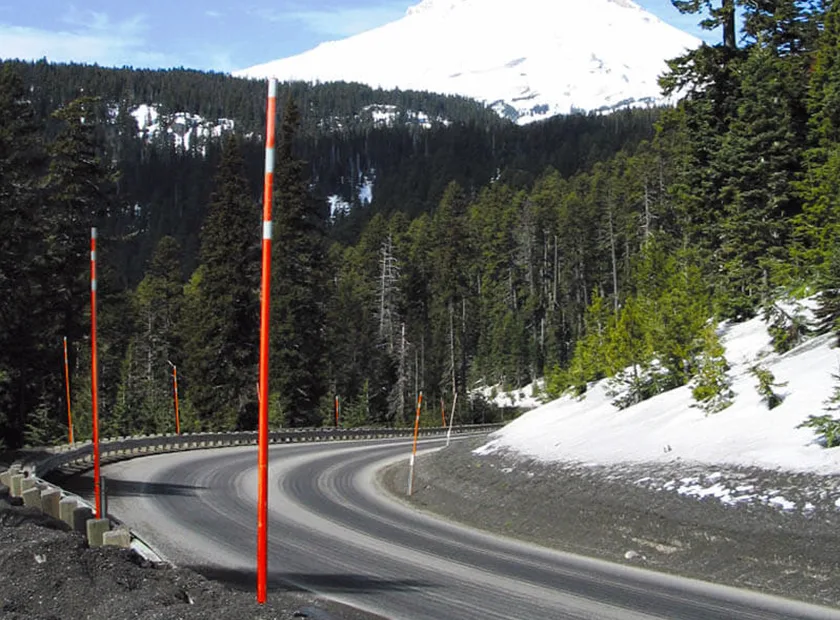Introduction
Winter brings with it not only the beauty of snow-covered landscapes but also the challenges of snow removal. Snow plowing, in particular, can be tricky, especially when visibility is poor, and property boundaries are obscured by snow. This is where snow stakes come into play. These simple yet effective tools are critical for guiding plow operators, protecting property, and ensuring safety during snow removal.
In this guide, we’ll explore how snow stakes improve plowing efficiency, their types, installation techniques, and the benefits they offer to homeowners and snow removal professionals alike. If you’re looking to enhance your snow management practices, using snow stakes for plowing is essential.

snow stakes plowing
1. What Are Snow Stakes and Why Are They Important?
Snow stakes are markers, typically made of plastic, fiberglass, or metal, that outline driveways, pathways, and parking lots. Their primary function is to prevent plows from accidentally damaging curbs, landscaping, and property edges during snow removal. By marking the areas where plowing is safe, snow stakes help operators avoid costly damage and allow for more efficient snow clearing operations.
The importance of snow stakes cannot be overstated, particularly during snowstorms or nighttime plowing, when visibility is reduced. These markers provide plow drivers with clear guidance, ensuring they can navigate residential and commercial properties without causing damage to lawns, fences, or other delicate areas.
2. Types of Snow Stakes: Which Ones Are Best for Plowing?
Snow stakes come in various materials, each offering distinct benefits for different plowing conditions. The most common types include:
- Plastic Snow Stakes: Lightweight and affordable, these are ideal for temporary or light-duty use. However, they may not withstand harsh conditions as well as other materials.
- Fiberglass Snow Stakes: Durable and flexible, fiberglass stakes are more resilient to extreme cold and impact. They also tend to last longer than plastic stakes.
- Metal Snow Stakes: The most durable option, metal stakes are excellent for heavy-duty use but can be more expensive and harder to handle due to their weight.
Another consideration when selecting snow stakes is whether to use reflective or non-reflective models. Reflective stakes are highly visible during nighttime plowing and in low-light conditions, making them a safer choice for busy areas or long driveways. Non-reflective stakes, on the other hand, may suffice in well-lit areas or for budget-conscious homeowners.
3. How to Properly Install Snow Stakes for Effective Plowing
Proper installation of snow stakes is key to ensuring their effectiveness throughout the winter. Here’s a step-by-step guide to installing snow stakes correctly:
- Determine Placement: For straight driveways, place stakes every 10-15 feet along the driveway edge. For curved or irregular driveways, install stakes at every pivot or turn to ensure full coverage. Commercial properties may require more frequent staking to accommodate larger vehicles and additional hazards.
- Use the Right Tools: You’ll need a hammer or mallet for installation. For frozen or hard ground, you may need to drill pilot holes or use a specialized installation tool.
- Install Before the Ground Freezes: Snow stakes should be installed in mid to late fall, before the ground freezes. Installing stakes in soft ground is much easier and ensures they remain secure throughout the season.
- Ensure Proper Depth: Stakes should be inserted at least 6 inches into the ground to prevent them from being easily knocked over.
By following these steps, you’ll ensure that your snow stakes are optimally positioned for safe and efficient plowing.
4. Maintenance Tips to Extend the Life of Your Snow Stakes
To get the most out of your snow stakes, regular maintenance is key. After the winter season, clean your stakes to remove dirt and grime. This prevents deterioration during storage. Store stakes in a dry place to avoid rust or weakening from moisture. Additionally, inspect stakes for damage before reinstalling them the next season. Broken or damaged stakes should be replaced to maintain visibility and effectiveness during plowing.
If you’re concerned about environmental impact, consider using snow stakes made from recycled materials or biodegradable options, which are increasingly available on the market.
5. Benefits of Using Snow Stakes for Plowing
Using snow stakes for plowing offers several clear advantages:
- Improved Safety: Snow stakes increase visibility, reducing the risk of accidents or property damage during snow removal.
- Enhanced Efficiency: Plow operators can complete their jobs more quickly and accurately when they have clear markers to follow, resulting in a more efficient snow removal process.
- Cost Savings: By preventing damage to landscaping and property features, snow stakes reduce repair costs and protect your investment over time.
Whether you’re a homeowner or a snow removal professional, investing in quality snow stakes can save time, money, and stress throughout the winter season.
Conclusion & Call to Action
In conclusion, snow stakes are essential for efficient and safe snow removal. By marking the boundaries of driveways, walkways, and other property features, they guide plow operators and prevent damage, ultimately saving time and money. Now is the perfect time to prepare for winter by installing snow stakes on your property. Don’t wait for the snow to fall—take action today to ensure a smooth and damage-free snow removal season.




























